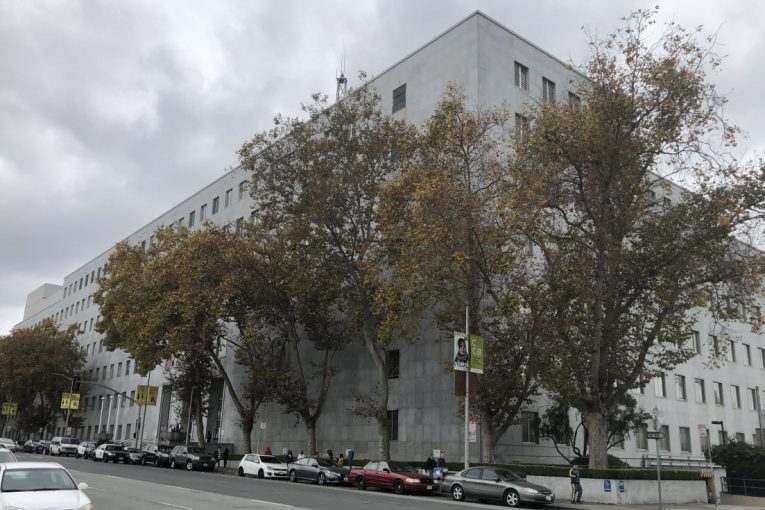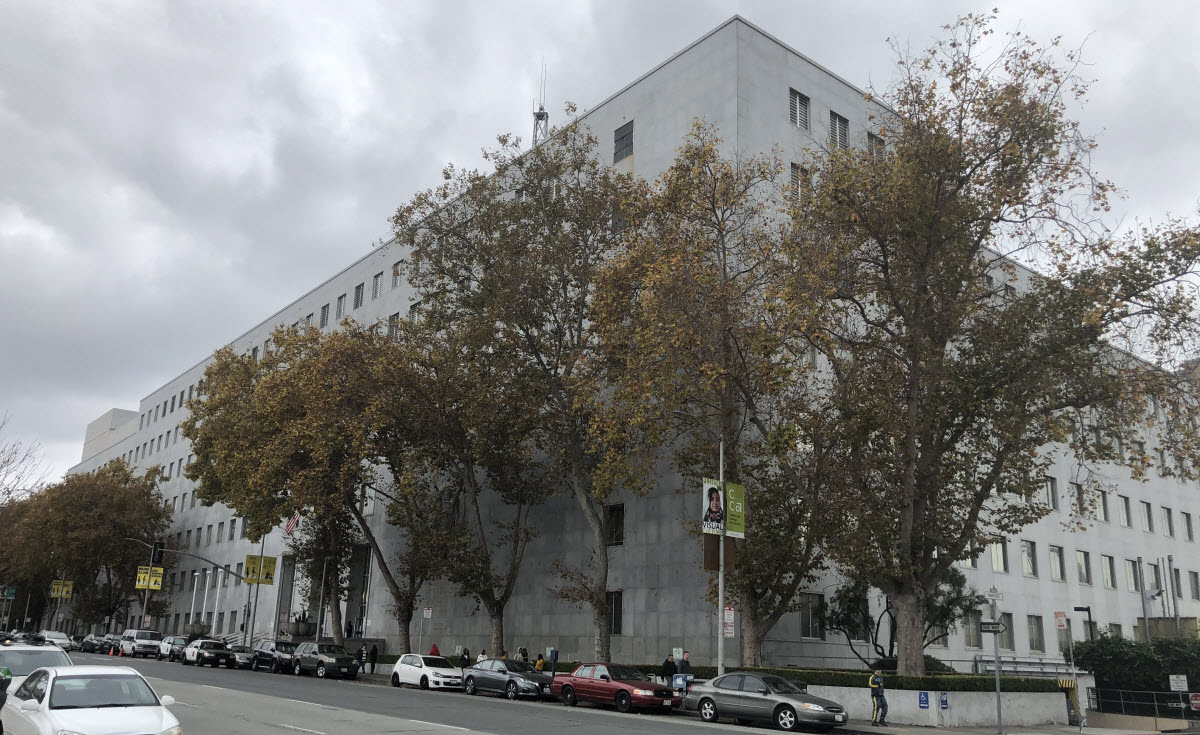

By Alexandra Cline
SAN FRANCISCO- A woman was charged with two counts of driving under the influence of alcohol after allegedly side-sweeping a FedEx truck and making a dent in the right hand corner of a Jeep.
This trial, which started on Wednesday, March 11, proceeded in Dept. 29 at the San Francisco Superior Court, at 9:30am on March 13, 2020. The prosecution had the burden to prove beyond a reasonable doubt that the defendant drove while intoxicated, and that her Blood Alcohol Content level was 0.08 percent or higher.
Judge Rita Lin started the trial by instructing the jury about the laws involved in the case and what jurors should base their judgments on. She handed out copies of this legal description, and urged jurors not to let stereotypes affect their decisions.
She urged the jury to take their time reaching the verdict, and that the court would accommodate their concerns about school closures due to coronavirus. In other words, they may be excused from jury duty if deliberation continues to Monday.
Jurors were allowed to take notes, but they were not to do any research outside of court about facts regarding the case. Judge Rita Lin reminded the jury that questions and remarks made by lawyers are merely arguments, and only witness answers can be used as evidence.
The judge also explained that if there are two or more conclusions to circumstantial evidence and one of them is innocence, then the verdict should be “not guilty.” The jury must also decide  whether the defendant acted with wrongful intent.
whether the defendant acted with wrongful intent.
One officer questioned the defendant before she was tested for sobriety, and the body camera video of this interaction was used in the trial.
Assistant District Attorney Benjamin Forkus provided a PowerPoint during his closing statement, in which he sought to convince the jury that the defendant was honest in the videos, and therefore they could trust these out-of-court statements of admitting guilt.
Assistant DA Forkus stated that two PAS breathalyzer tests showed that the defendant had a BAC level of above 0.20 percent at 5:36 pm and 5:39 pm, less than an hour after the accident. The defendant’s blood was drawn at 6:38pm, and BAC was above .20. An hour later, her BAC level was 0.01. He claimed that machines from the Office of the Chief Medical Examiner (OCME) produced valid results and police conducted proper protocol while using them.
In one video, the defendant claims she drank two mimosas between 2:00pm and 3:00 pm, and she tells the officer that she doesn’t want to lie.
A doctor testified in an earlier hearing that the defendant would have consumed several drinks in order to have a 0.20 BAC level or higher. The prosecution argued that the defendant would only lie about minor details, and is honest enough that the jury should believe her confession to being the driver.
The expert witness also stated that it takes 1-1.5 hours for a body to completely absorb alcohol before going into elimination, which is when BAC levels start to go down. Assistant DA Forkus used this testimony to imply that the defendant’s BAC level was even higher before the test was taken.
When officers arrived at the scene, a car was blocking traffic, and the defendant was in the passenger’s seat. Another woman near the driver’s seat was allegedly yelling loudly at the defendant. Officers claimed that the defendant couldn’t unbuckle her seatbelt and fell out of the vehicle due to intoxication, in their witness testimonies.
The officers did not interview witnesses at the scene, nor provide video from the investigation of the accident that occurred. The car was not tested for fingerprints and the keys to the car were not found on the defendant.
During one the videos, the defendant nods when the officer asks if she was the driver of the car. She continuously says that she “f**ked up” and admits to hitting other cars. When the defendant was detained, she asked the officers if they were going to arrest her and if they were testing to see how lucid she was.
When asked if she had mental impairments, the defendant said, “Clearly, I’m retarded.”
The prosecution claimed that she wasn’t coerced and offered this information voluntarily. The Assistant DA also argued that she was “aware of danger” and “sought to avoid it.” The defendant was crying in some of the clips and claimed she felt that people were watching her.
DA Forkus argued that her alleged driving pattern implied she was drunk driving, as it was a deviation from a straight line. One officer, who admitted he was not qualified to evaluate intoxication levels, testified that she had difficulty balancing and eye-tracking.
The prosecution used the defendant’s videos as evidence to her guilt to driving the car. He claimed that her BAC level and the officer’s testimonies implied that she was intoxicated.
During Deputy Public Defender Peter Calloway’s closing statement, he argued not that the defendant wasn’t drinking, but that she was not the driver of the vehicle. He stated that if the defendant was as drunk as officers claimed then she wouldn’t have been able to move to the passenger seat right after the accident.
He reminded the jury of CALCRIM No. 359, the jury instruction on corpus delicti, evidence oof a charged crime, which instructed jurors to not use out-of-court statements as evidence unless there is evidence in court that proves guilt beyond a reasonable doubt. These videos can only be used to imply a reasonable inference of guilt.
Mr. Calloway recalled that the defendant stated in the video that “we drank mimosas,” which he suggested involved the other woman present at the scene, who was not interviewed.
The defense also mentioned that the defendant may have been fearful during a police interaction, and could have said untruthful things while being questioned. His main argument was that there was not enough evidence for a conviction.
One officer gave no reason as to why he didn’t interview witnesses at the scene, and another officer claimed he was not qualified to investigate DUI cases. They didn’t ask her why she was in the passenger seat when they arrived at the scene.
The defense also considered that the chemical test given to the defendant may have violated Title 17, which would mean an unjust process or improper investigation. He claimed that her out-of-court statements were not eligible because of her intoxication level at the time.
Mr. Calloway asked the jury to hold on to their current perspectives about the case. He then argued that the defendant was not guilty because there wasn’t enough evidence.
During ADA Forkus’s rebuttal, he reminded the jury to only consider in-court evidence, and that the police were not the ones on trial. He claimed that the driver’s seat not being investigated did not imply innocence. He stated that there was no evidence that the video of the accident was available.
He argued that both the prosecution and defense failed to call more witnesses, such as the other woman near the vehicle, so the jury shouldn’t take this into account. The prosecution claimed that it wasn’t clear that the defendant attempted to take her seat belt off when officers arrived.
He concluded that the jury should find that someone drove drunk, and that they must decide that person’s identity.
The judge instructed the jury about deliberation, reminding them that they can view evidence from the trial, by writing a note of request. She urged them to come to a conclusion without consideration of punishment. They retreated to the deliberation room, and the verdict should be decided by next week.
To sign up for our new newsletter – Everyday Injustice – https://tinyurl.com/yyultcf9
